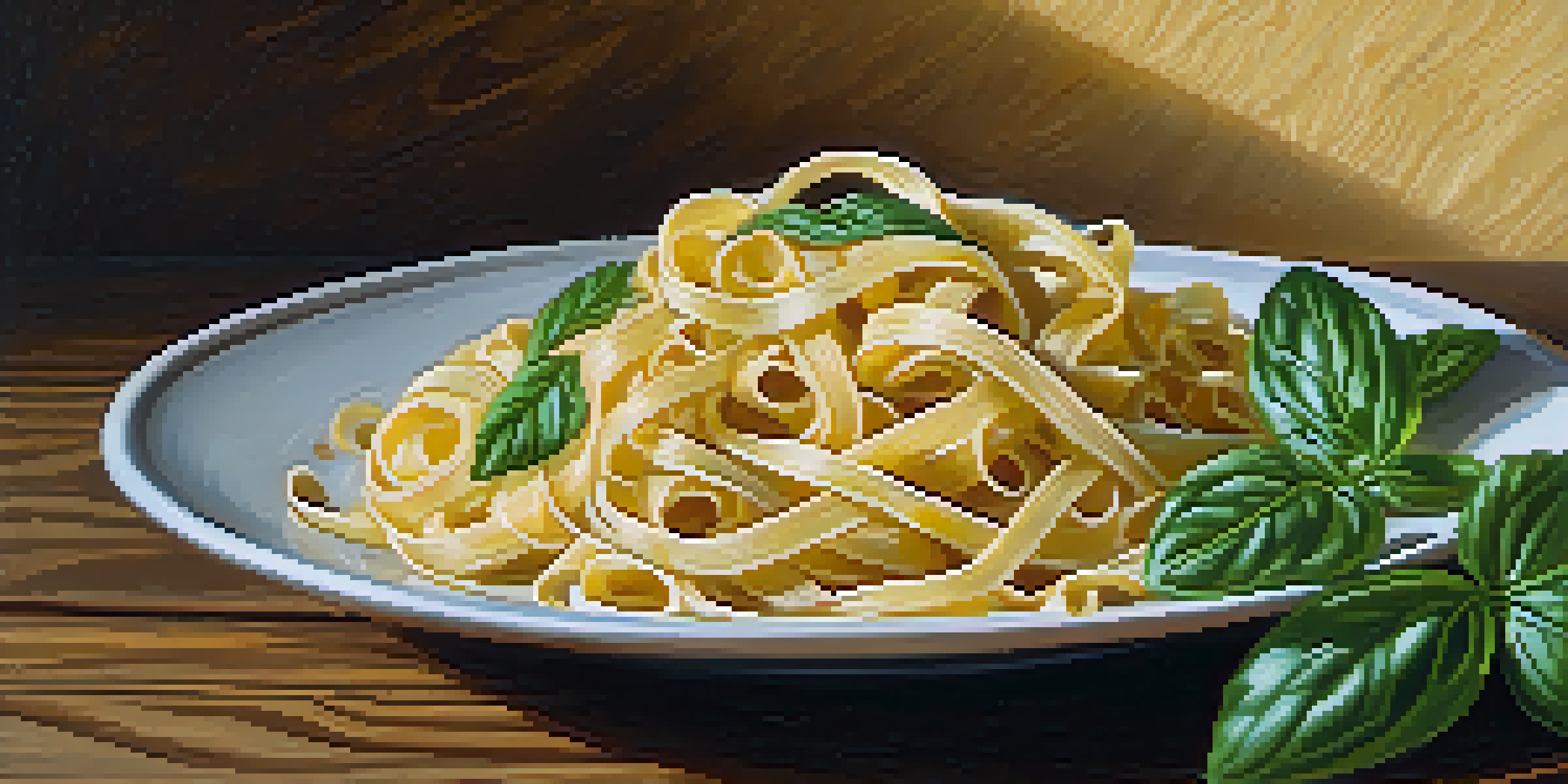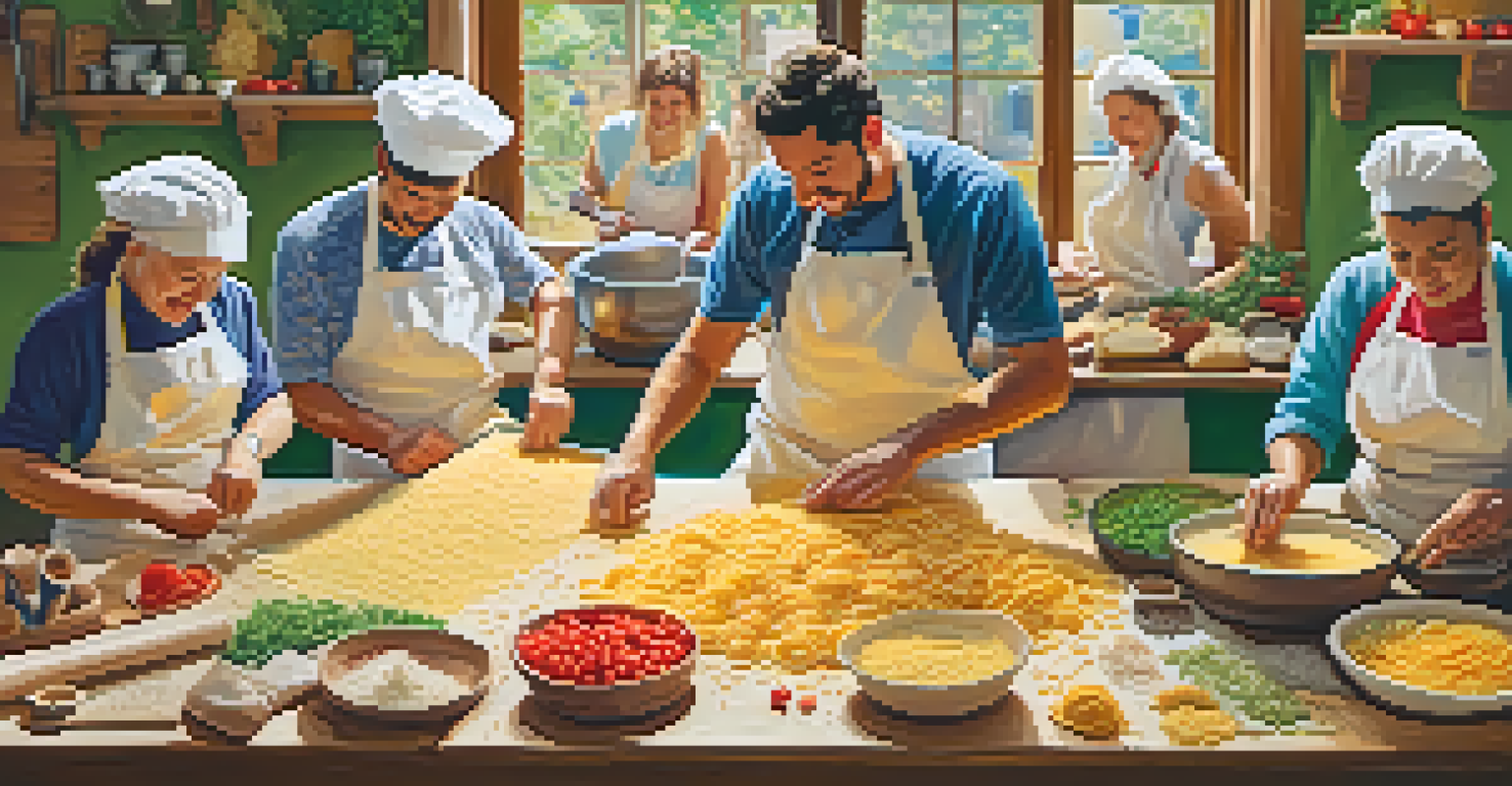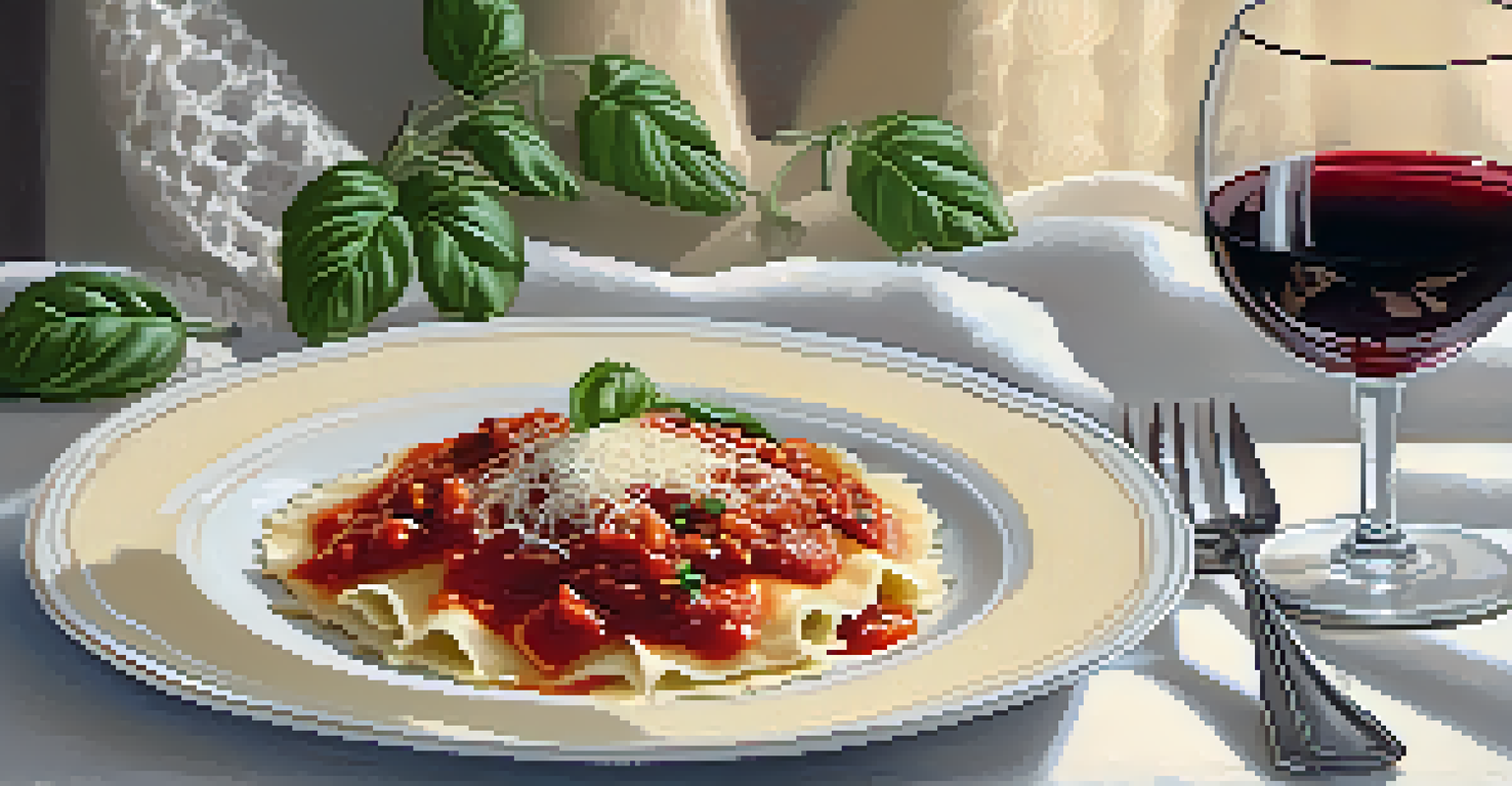The Art of Pasta Making: Cooking Classes in Italy

The Allure of Italian Pasta: A Culinary Journey
Italian pasta is more than just a meal; it's a cultural tradition that dates back centuries. Each region boasts its own unique shapes and flavors, reflecting the local ingredients and customs. Imagine twirling fresh fettuccine around your fork or savoring a rich, hearty lasagna, knowing you made it yourself.
Cooking is like love. It should be entered into with abandon or not at all.
This culinary art form is a beautiful blend of technique and creativity. From kneading the dough to shaping it into exquisite forms, every step is an opportunity to learn and experiment. Pasta making is a gratifying process that connects you to the rich history and culture of Italy.
When you take a pasta-making class in Italy, you’re not just learning to cook; you’re immersing yourself in a vibrant heritage. Whether you’re a novice or an experienced cook, the thrill of crafting your own pasta is an experience that stays with you long after the last bite.
Choosing the Right Cooking Class for You
With so many cooking classes available, selecting the right one can feel overwhelming. Consider factors like class size, instructor experience, and the type of pasta you want to learn about. Some classes focus on traditional recipes, while others may offer a modern twist, allowing you to explore your culinary preferences.

Many classes also provide options for different skill levels, so whether you're just starting out or looking to refine your techniques, there’s something for everyone. A hands-on approach is essential; the best classes encourage participants to engage with the ingredients and the process directly.
Pasta as a Cultural Experience
Taking a pasta-making class in Italy immerses you in a rich culinary tradition while allowing you to create your own delicious dishes.
Before booking, read reviews and perhaps even reach out to past students to gain insights into their experiences. A little research can go a long way in ensuring you find a class that resonates with your culinary aspirations.
The Essential Ingredients for Pasta Making
At the heart of pasta making are just a few simple ingredients: flour, eggs, and a pinch of salt. The type of flour can significantly affect the texture and flavor of your pasta. For instance, '00' flour is a popular choice in Italy for its fine texture, yielding a silky-smooth dough.
Food is our common ground, a universal experience.
Eggs add richness and color, while salt enhances the overall flavor. The quality of your ingredients matters, too; using fresh, local eggs and high-quality flour can elevate your pasta from good to extraordinary. This simplicity is part of what makes Italian cuisine so beloved.
As you embark on your pasta-making journey, you'll learn to appreciate the quality and characteristics of these ingredients. Understanding how they work together will empower you to create various pasta types, from delicate ravioli to robust pappardelle.
Mastering the Techniques of Pasta Making
Pasta making is as much about technique as it is about ingredients. You'll learn essential skills like kneading the dough, rolling it out to the perfect thickness, and cutting it into your desired shape. These techniques may seem daunting at first, but with practice, they become second nature.
Most classes will also teach you the art of filling pasta, such as making ravioli or tortellini. This process allows for endless creativity, as you can experiment with various fillings, from classic ricotta to seasonal vegetables. Each fold and pinch brings you closer to mastering this culinary skill.
Essential Ingredients Matter
Quality ingredients like flour and eggs significantly impact the texture and flavor of your homemade pasta.
As you practice these techniques, you'll gain confidence in your abilities. Before you know it, you'll be impressing friends and family with your homemade pasta, and sharing stories of your Italian culinary adventure.
Exploring Regional Varieties of Pasta in Classes
Italy's rich culinary landscape means that pasta varies widely from region to region. In a cooking class, you might learn to make orecchiette in Puglia or trofie in Liguria, each with its own unique preparation methods and sauces. This regional focus not only enhances your cooking skills but also deepens your appreciation for Italian culture.
Classes often highlight traditional sauces that pair perfectly with the pasta shapes you create. For example, learning to make a fresh basil pesto to toss with your trofie adds a burst of flavor that transforms your dish. Embracing these regional specialties can truly enrich your culinary repertoire.
As you explore these varieties, you'll find that each dish tells a story of its place of origin. This connection to the land and its people makes the experience of learning pasta making in Italy even more meaningful.
The Social Aspect of Pasta Making Classes
One of the most delightful aspects of pasta making classes is the opportunity to connect with fellow food lovers. Cooking together fosters a sense of camaraderie, as you share tips, laughter, and, of course, delicious food. These shared experiences often lead to lasting friendships, transcending borders and cultures.
Many classes encourage participants to work in teams, making the process even more enjoyable. Whether you’re rolling dough side by side or tasting each other’s creations, the collaborative spirit enhances the overall experience. Plus, it's a great way to learn from one another and pick up new techniques.
The Joy of Cooking Together
Pasta-making classes foster a collaborative environment where participants can share experiences, tips, and create lasting friendships.
Gathering around a table to enjoy the pasta you’ve all created is a highlight of any cooking class. Sharing stories over a meal not only nourishes the body but also feeds the soul, creating memories that you’ll cherish for years to come.
Bringing the Experience Home: Tips for Continuation
After returning home from your Italian adventure, you may wonder how to keep the pasta-making magic alive. The good news is that many techniques and recipes can easily be replicated in your kitchen. Start by practicing the basic recipes you learned and gradually incorporate your own twists.
Investing in a few essential tools can make the process easier. A good rolling pin, a pasta machine, and a quality knife for cutting shapes can elevate your homemade pasta. Don’t forget to keep experimenting with different fillings and sauces to discover new favorites.

Lastly, consider hosting a pasta-making night with friends or family. This can be a fun way to share your newfound skills and bring a taste of Italy back into your life, all while creating more cherished memories around the table.